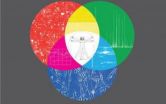(Press-News.org) ITHACA, N.Y. – Engineers have created a shape-changing "soft" robot that can tread over a variety of adverse environmental conditions including snow, puddles of water, flames, and the crushing force of being run over by an automobile.
Videos: https://cornell.box.com/softrobot
The engineers from Cornell and Harvard Universities will detail the robot in an upcoming edition of the journal Soft Robotics. An early online version of the study can be found at: http://online.liebertpub.com/doi/full/10.1089/soro.2014.0008
The pneumatically powered, fully untethered robot was enabled by the careful selection of materials and composites, including silicone elastomer. It can carry its own weight and the authors say the robot demonstrates surprising resilience with implications for search and rescue missions.
INFORMATION:
More info: http://www.liebertpub.com/global/pressrelease/harvard-and-cornell-researchers-develop-soft-robot-capable-of-untethered-autonomous-operation/1508/
Soft robot squirms over fire, ice, and withstands crushing force
2014-09-08
ELSE PRESS RELEASES FROM THIS DATE:
NASA sees large Tropical Storm Fengshen skirting eastern Japan's coastline
2014-09-08
Tropical Storm Fengshen is a large storm and infrared imagery from NASA's Aqua satellite shows that it's about as long as the big island of Japan.
NASA's Aqua satellite passed over Tropical Storm Fengshen on September 7 and the Atmospheric Infrared Sounder instrument known as AIRS gathered temperature data about the storm's cloud tops and surrounding sea surface temperatures. The infrared data showed strong thunderstorms surrounded the center of circulation and also appeared in large bands south and northeast of the storm's center. Another large and fragmented band on ...
Yale study shows how conversion of forests to cropland affected climate
2014-09-08
The conversion of forests into cropland worldwide has triggered an atmospheric change that, while seldom considered in climate models, has had a net cooling effect on global temperatures, according to a new Yale study.
Writing in the journal Nature Climate Change, Professor Nadine Unger of the Yale School of Forestry & Environmental Studies (F&ES) reports that large-scale forest losses during the last 150 years have reduced global emissions of biogenic volatile organic compounds (BVOCs), which control the atmospheric distribution of many short-lived climate pollutants, ...
Brain damage caused by severe sleep apnea is reversible
2014-09-08
DARIEN, IL – A neuroimaging study is the first to show that white matter damage caused by severe obstructive sleep apnea can be reversed by continuous positive airway pressure therapy. The results underscore the importance of the "Stop the Snore" campaign of the National Healthy Sleep Awareness Project, a collaboration between the Centers for Disease Control and Prevention, American Academy of Sleep Medicine, Sleep Research Society and other partners.
Results show that participants with severe, untreated sleep apnea had a significant reduction in white matter fiber integrity ...
A bird-pollinated flower with a rather ingenious twist
2014-09-08
VIDEO:
When a bird forages on nectar, the flower twists as the spur complies with the shape of the
bird's bill. In consequence, pollen is placed in an unusual location on...
Click here for more information.
When researchers studying several bird-pollinated species of Impatiens flowers in the mountains of western Cameroon noticed one with an odd, upwardly curving nectar spur, they couldn't imagine how any sunbird could ever sip from it. After recording visitors to the flower continuously ...
Coral trout pick their collaborators carefully
2014-09-08
VIDEO:
Coral trout are choosey about moray collaborators.
Click here for more information.
Coral trout not only work with moray eels to improve their chances of a meal, but they can also be choosy when it comes to picking the best moray partner. The findings reported in the Cell Press journal Current Biology on September 8 show that such sophisticated collaborative abilities are not limited to apes and humans.
The fish's behavior is remarkable in other ways too, the researchers ...
Fish as good as chimpanzees at choosing the best partner for a task
2014-09-08
Coral trout are fast when chasing prey above the reefs of their habitat, but can't pursue their quarry if it buries itself into a hard-to-reach reef crevice.
When this happens, the trout will team up with a snake-like moray eel to flush out the unfortunate fish in a remarkable piece of interspecies collaboration: either the eel takes the prey in the reef, or scares it back into the open so the trout can pounce.
Coral trout - along with close relative the roving coral grouper - will use gestures and signals to flag the location of prey to an eel, including head shakes ...
Hog workers carry drug-resistant bacteria even after they leave the farm
2014-09-08
A new study suggests that nearly half of workers who care for animals in large industrial hog farming operations may be carrying home livestock-associated bacteria in their noses, and that this potentially harmful bacteria remains with them up to four days after exposure.
Researchers had believed that livestock-associated bacteria would clear from the noses of hog workers quickly – within 24 hours. But this small study of hog workers in North Carolina, reported online Sept. 8 in the journal Occupational and Environmental Medicine, suggests it can stick around longer. ...
Popular cancer drug target implicated in cardiovascular defects
2014-09-08
September 8, 2014 CHAPEL HILL – UNC School of Medicine researchers have discovered an unlikely relationship between CXCR7 – a protein implicated in tumor growth and metastasis – and adrenomedullin – a hormone involved in cardiovascular health. Deleting CXCR7 allows adrenomedullin to run rampant, triggering the development of an enlarged heart and the overgrowth of the lymphatic vessels that traffic immune cells and fluids throughout the body.
The study, published September 8 in the journal Developmental Cell, reveals that CXCR7 binds to the ligand adrenomedullin. The ...
UNC researchers find new genetic target for a different kind of cancer drug
2014-09-08
CHAPEL HILL, NC – Researchers from the UNC School of Medicine have discovered that the protein RBM4, a molecule crucial to the process of gene splicing, is drastically decreased in multiple forms of human cancer, including lung and breast cancers. The finding, published today in the journal Cancer Cell, offers a new route toward therapies that can thwart the altered genetic pathways that allow cancer cells to proliferate and spread.
"Historically, scientists haven't targeted the proteins in cancer cells that are involved in gene splicing," said Zefeng Wang, PhD, associate ...
Scientists apply biomedical technique to reveal changes in body of the ocean
2014-09-08
For decades, doctors have developed methods to diagnose how different types of cells and systems in the body are functioning. Now scientists have adapted an emerging biomedical technique to study the vast body of the ocean.
In a paper published this week in the journal Science, scientists demonstrate that they can identify and measure proteins in the ocean, revealing how single-celled marine organisms and ocean ecosystems operate.
The National Science Foundation (NSF) and the Gordon and Betty Moore Foundation funded the research.
"Proteins are the molecules that catalyze ...



